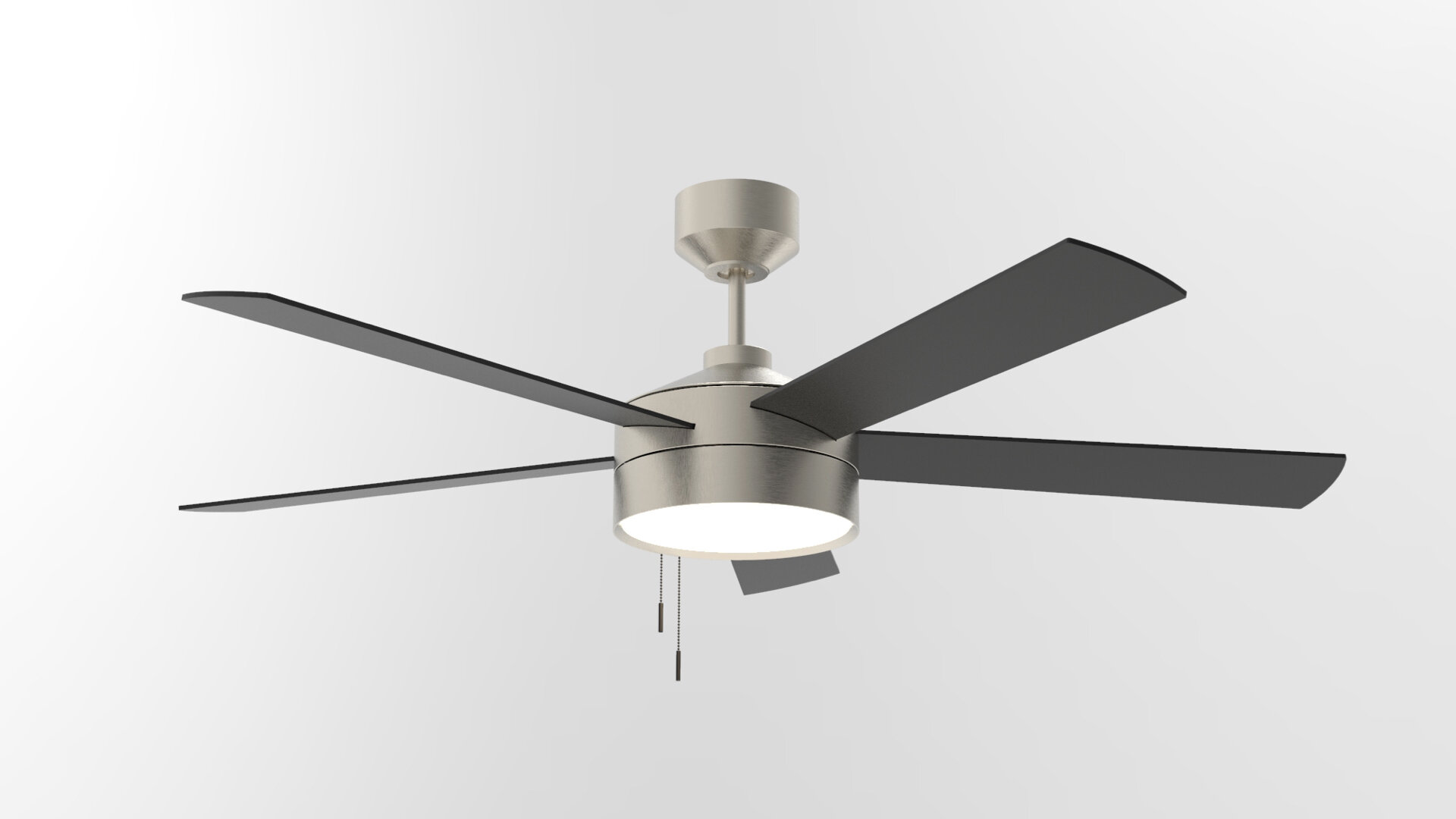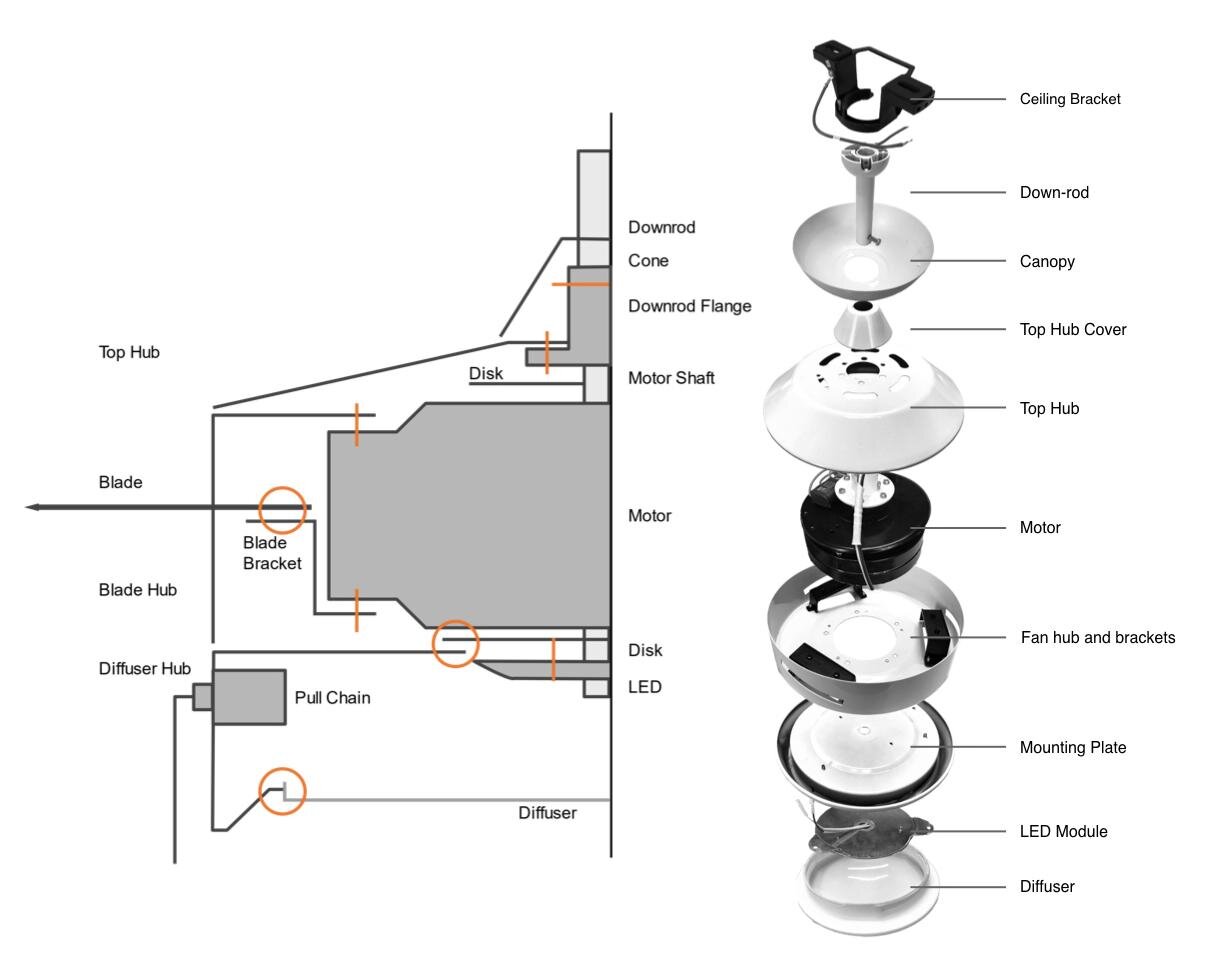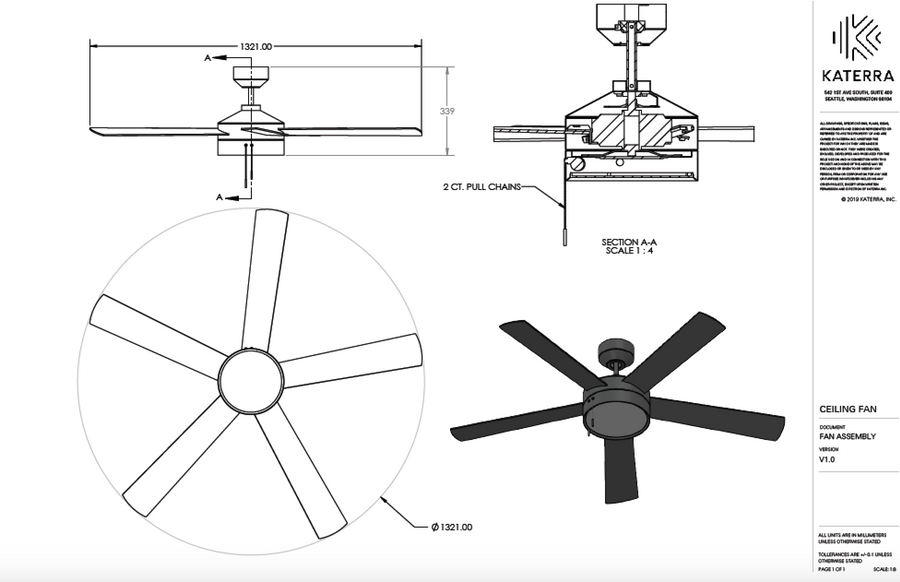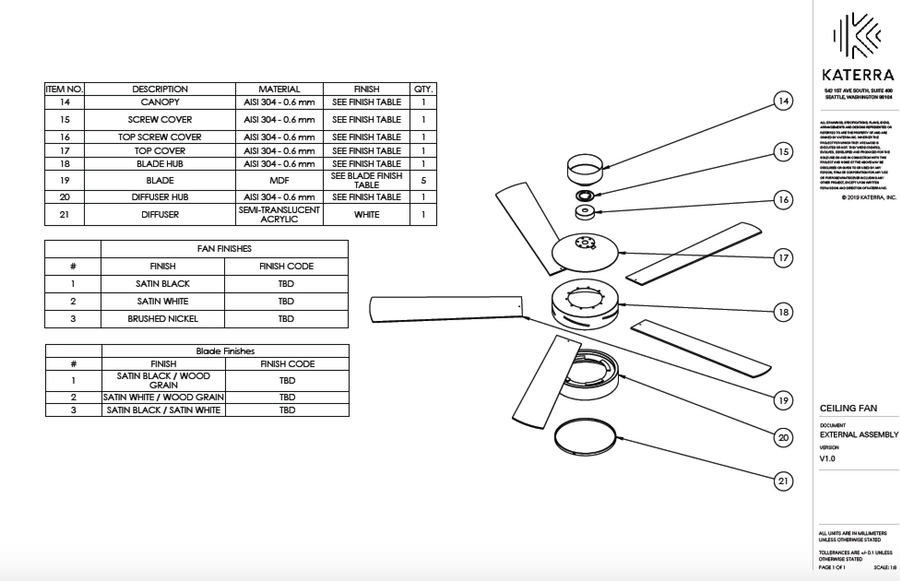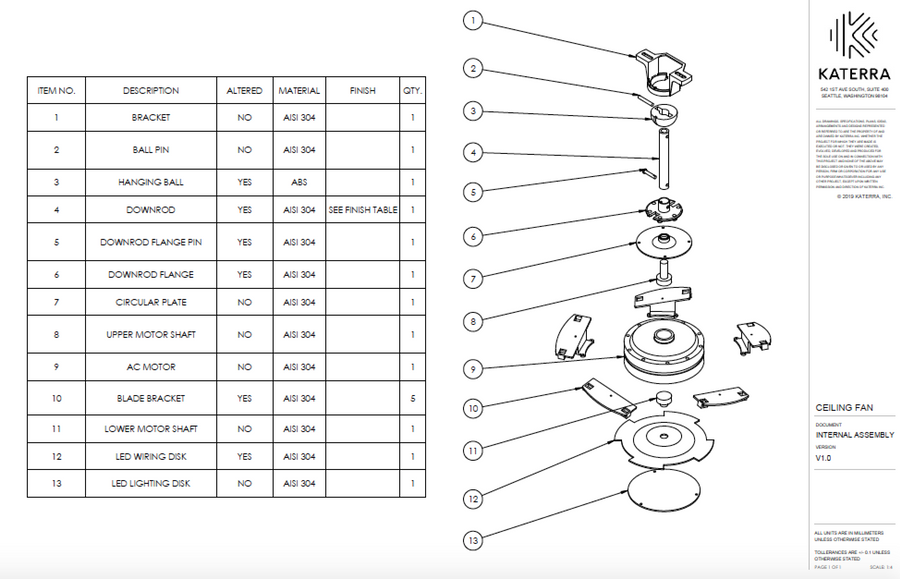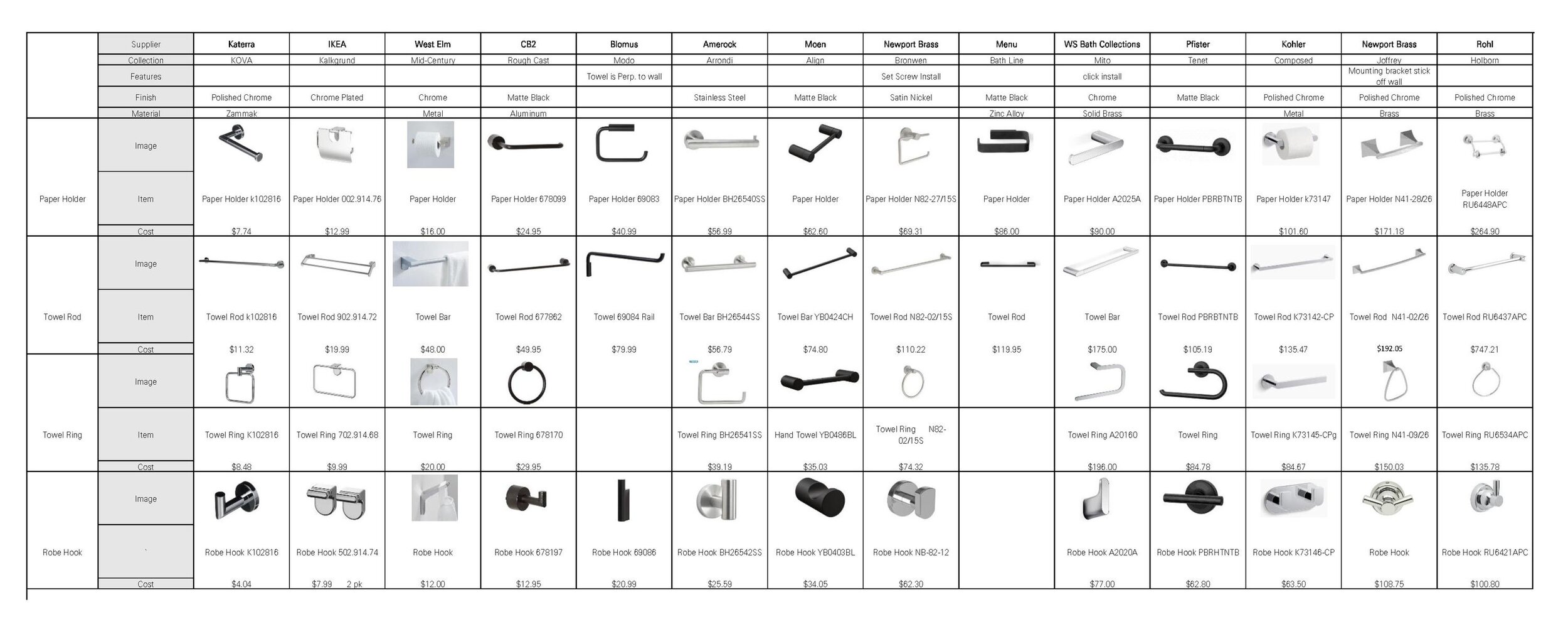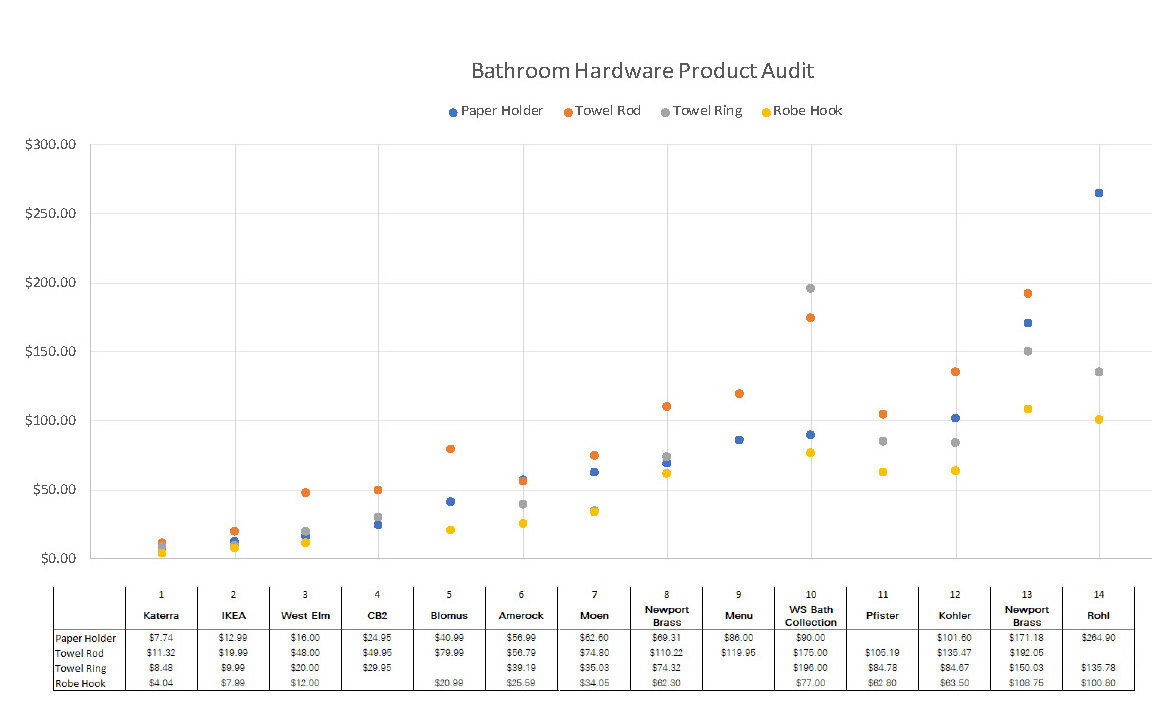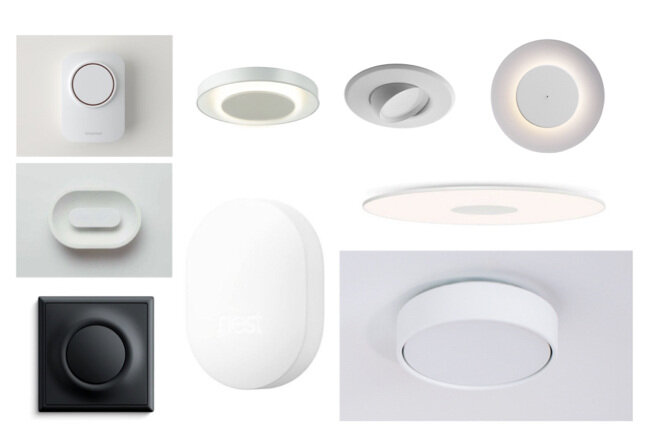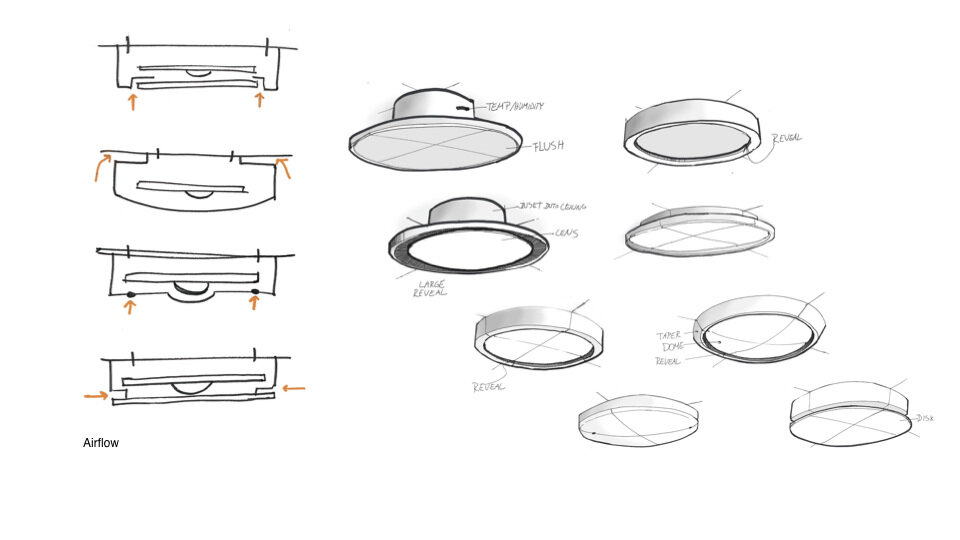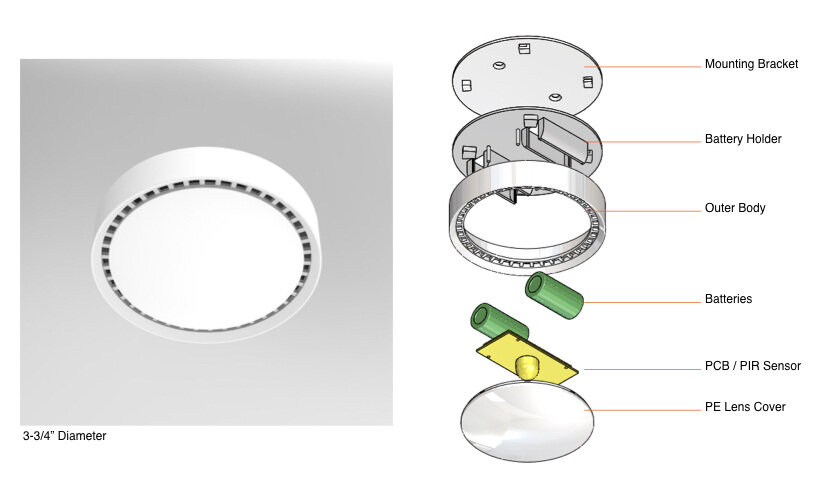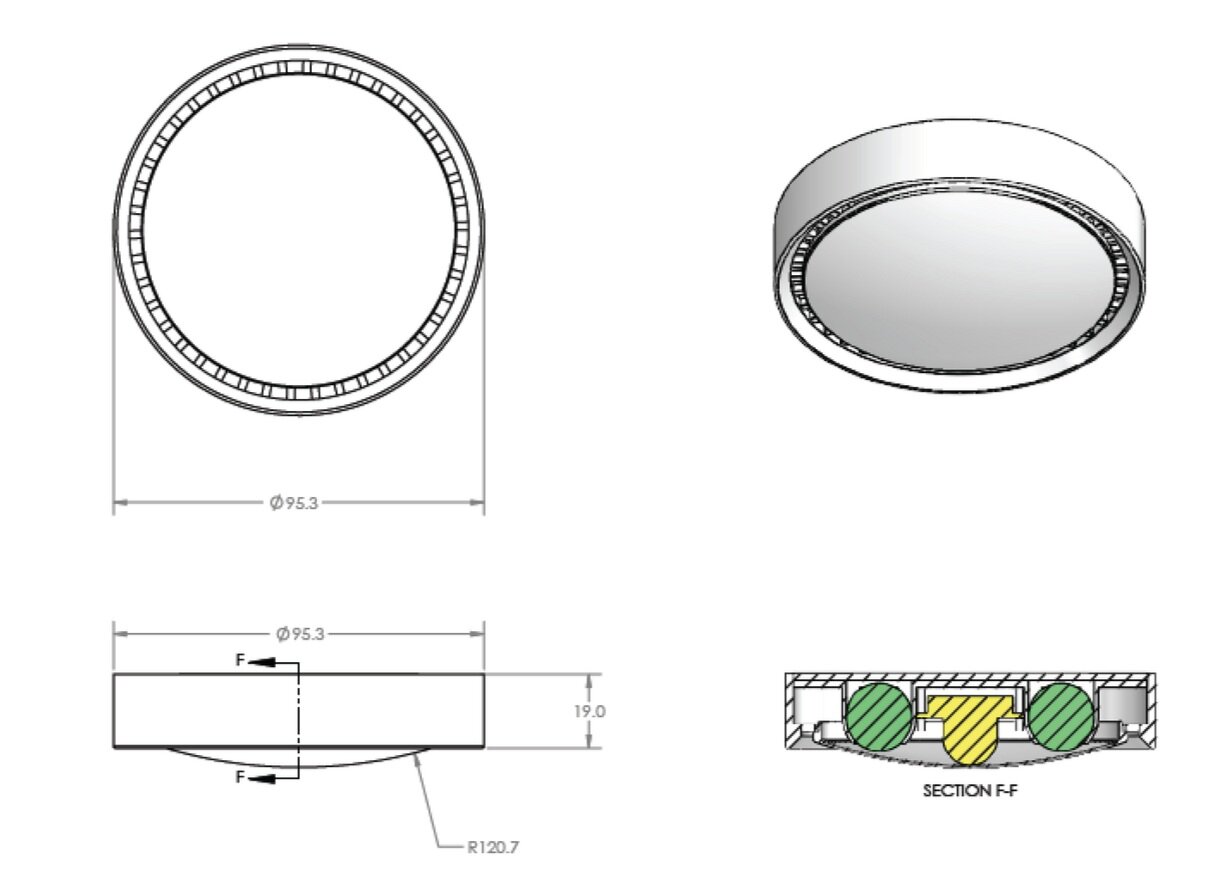Katerra Product Design
C O M P A N Y
Katerra - Architecture & Construction
T O O L S
Solidworks, Keyshot, SLA Printers
R O L E
Industrial Design, Strategy, Product Development
KOVA is the official building products brand of Katerra, delivering the perfect balance of great design, consistent quality, and incomparable value.
Ceiling fan
Installation Optimization
CLT installation
Minimize manufacturing steps.
Reduce Hardware and install time
Problem
Product Optimization
Low cost
Simple design
Effecient wiring
Design & Development
After eliminating failed options and reiterating on successful versions, the team decided on two options to move forward.
Full scale model test the feasibility of the finalized design.
Three fan body finishes that would each have a different finish on each side of the fat blades.
Finishes
Research and Evaluation
After seaking out a documenting competitor product technical specifications, we evaluated how we would like to improve a fan beyond our current catalog fan.
What We Learned
To achieve the desired CFM for a 5 blade fan, the wattage would need to be more than our current catalog selection.
Discovery
Disassembled four fans to evaluate each exterior and interior part to re-engineer more effecient ways of assembly.
Full-Scale Prototype
Bath Accessory System
Problem
Produce a well designed and cohesive bathroom accessories line effecientely manufactured and reduces installation time.
Competitor Product Audit
Conclusion
Ikea’s bath accessory pricing is Katerra’s closet Competitor.
There’s seemingly infinite styles of cabinet hardware at a low cost.
Not many options for style matching grab bars.
Inspiration
Conclusion
Sleek lines.
Simple geometry.
Fluidity between forms.
Textured surfaces.
Design Ethos Predictions
Design that reflects the pursuit of well being.
Design that promotes positive experiences.
Design that is sustainable.
Ideation
Shelving above accessories, cantilevered accessories, double TP rod, multi-rod towel bar, shelving accessory.
Modular Parts System
Like the Katerra Kova Select plumbing fixture line, a system of modular parts would be more cost effective than manufacturing each individual prduct.
Conclusion
Forms don’t always translate to ADA grab bars or cabinet pulls.
Square accessories aren’t cohesive with Kova Select Brand.
Kova Select plumbing fixture line doesn’t translate well to accessories
Multi Sensor Product Development
Problem
Product Optimization
Sensing
PIR motion, temperature, humidity, light, UV
Low cost
Less in cost than existing catalogue offering.
Good Design
Design to comply with KOVA design standards.
Installation Optimization
Dual Install
Mounted on either the ceiling or wall requiring a large FOV.
Gypsum & CLT
this product may be mounted to a secured junction box.
Competitor Product Audit
I started off by disassembling and researching competitor products to evaluate their forms, the organize the internal components, and create a robust information architecture of parts and features. The Project’s Manager and I decided that to achieve the form and the dual installation use, we would need a very specific form to the product. This meant that we would need to develop a non-standard PIR sensor and lens (passive infrared sensor). I knew nothing about PIR sensors other than there specs and capabilities but since Katerra has about 6000 employees throughout the world, I knew I would be able to find experts who could help.
Aesthetic and Functional Features
CFM is smooth white plastic to relate to standard ceiling or wall color.
Circular form that’s not out of the oridnary which might relate to a smoke alarm.
Sleek and low profile with minumum seams.
Conclusion
The form should not appear as a surveillance device.
Design
While working with Katerra’s internal engineers and manufacturing in china, I developed a design that used a standard PIR sensor and PCB to dictate the overall size of the device.
Along with the optics engineer and our manufacturer in China, we were able to develop a PIR sensor and lens that gave the ability for the device to have a very flat profile like no other product on the market. This was not a quick journey as we went through many iterations of CAD models, annotated blue prints, physical prototypes, and testing for the device. I had to be comfortable making design adjustments during the prototyping phase knowing that we would need to throw ideas away or face some issues during the testing phase.
Adjustments with Manufacturing
A PIR lens that is flat as possible.
CRM124 rather than AA baterries.
3D printed prototype to better determine the design details.
3D printed model
Conclusion
I found that I was proud of how resourceful I could be by finding the proper experts and for pushing for a solution that first seemed impossible. At first, I felt a bit unsure about the things I didn’t know, but with some help I was able to learn a lot about electronics and optics to help launch a successful product.


